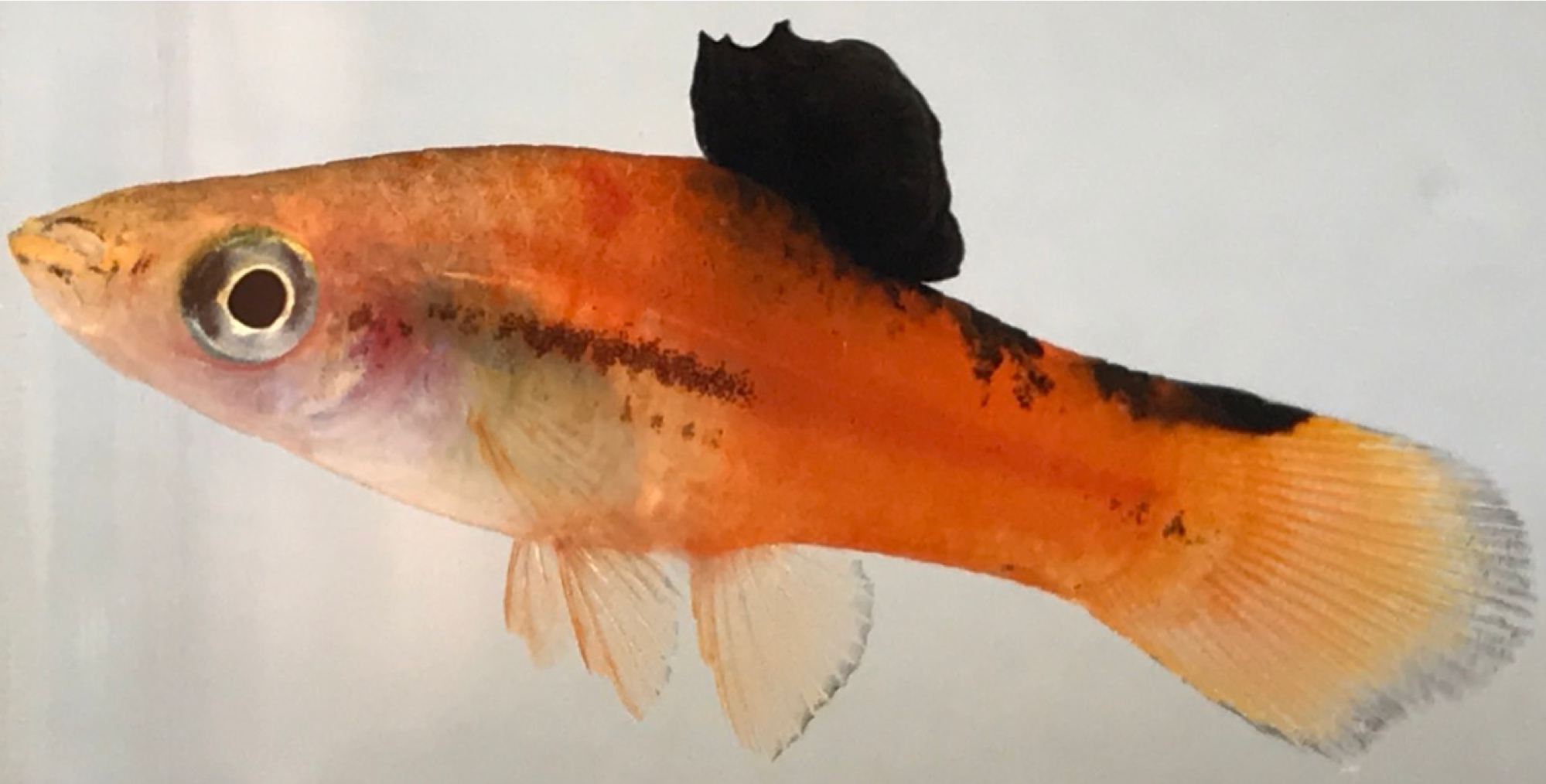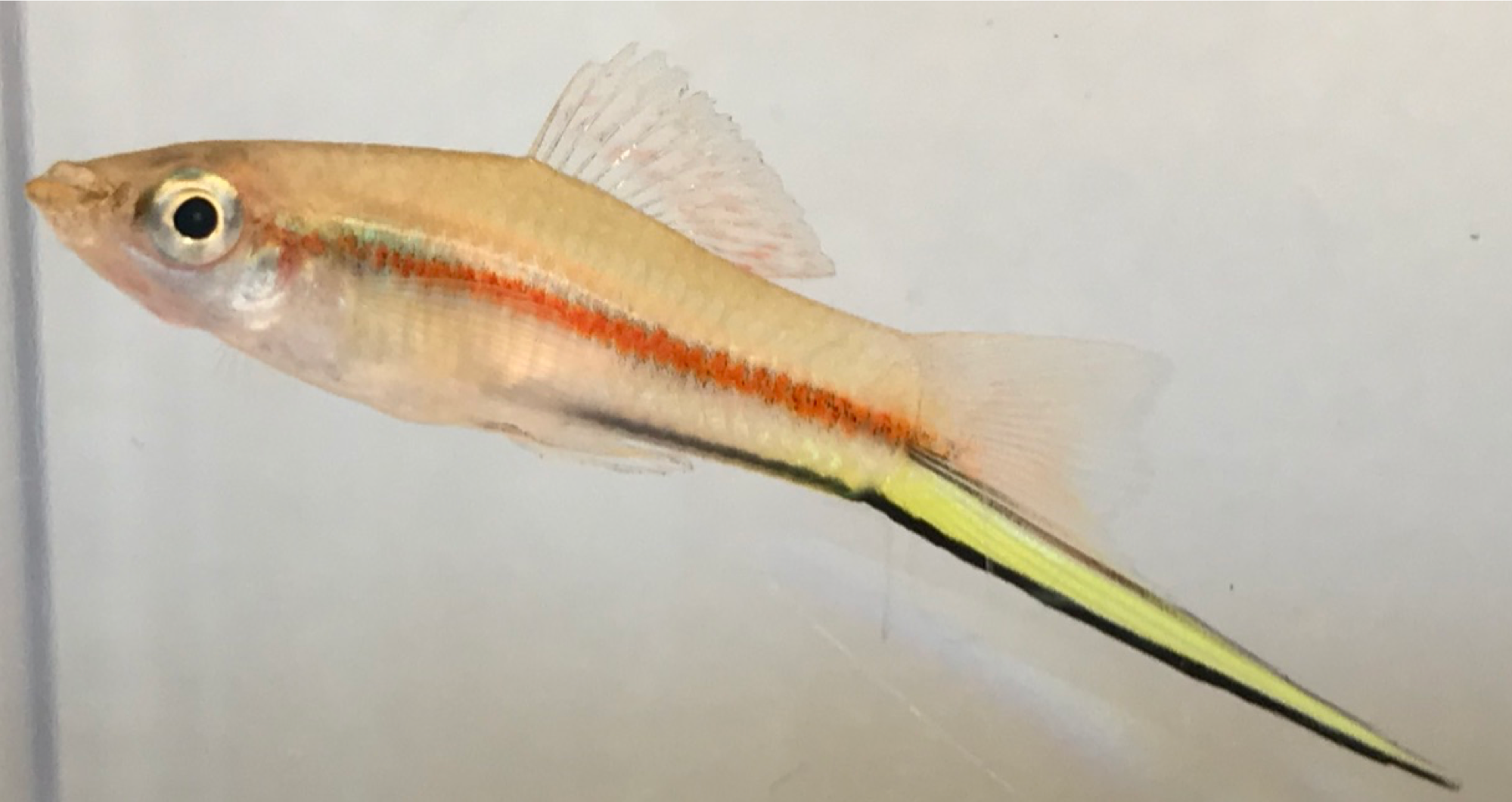Texas State collaboration identified new sex chromosome formation in swordtail fish
Jayme Blaschke | December 17, 2018
Texas State University researchers have contributed to groundbreaking research that has identified the formation of a new sex chromosome in Xiphophorus fish.
Texas State's Ron Walter, director of the Xiphophorus Genetic Stock Center and professor in the Department of Chemistry and Biochemistry at Texas State, collaborated with an international team led by Paolo Franchini of the University of Konstanz, Germany, on the project. Other collaborators included Manfred Schartl, Department for Physiological Chemistry at the Biocenter of the University of Würzburg, Germany, and Wesley Warren, McDonnell Genome Institute, Washington University School of Medicine in St. Louis.
The findings, "Long-term experimental hybridization results in the evolution of a new sex chromosome in swordtail fish," are published in the journal Nature Communications. The paper may be found online at www.nature.com/articles/s41467-018-07648-2.
The finding stemmed from a 30-year program hybridizing the southern platyfish Xiphophorus maculatus and the green swordtail Xiphophorus hellerii. The Xiphophorus species and hybrids are used as a key model system for cancer research and studying the evolutionary genetics of hybridisation.
"Our main role in this research was the sequencing and assembly of genomes for the two species, X. maculatus and X. hellerii," Walter said. "The work to produce these genome assemblies were supported from from my competitive National Institute of Health grant award in collaboration with Dr. Warren."
The best-studied sex chromosome systems are ZW and XY, female and male heterogametic systems respectively. In X. maculatus, which served as the maternal lineage, the sex chromosome system is XY, meaning the male determines the gender of the offspring. X. hellerii, which served as the paternal lineage, uses the ZW sex chromosome system, meaning the offspring's gender is determined by the female. While both parent species' sex chromosomes are clearly defined, the hybrid offspring's genome contained anomalies that did not conform to either parent. Repeated backcrossing of these hybrids with X. hellerii led to the formation of a new W sex chromosome. This occurred when a sex-determining region of a maternal ancestor, the X from X. maculatus, was translocated to an autosome, another chromosome in the offspring's genome that had been previously unrelated to gender determination.
The observation that the sex-determining region of the X translocated to an autosome provides the first empirical evidence of a heterologous transition, and shows that hybridization can influence the rapid evolution of new sex chromosomes.



The Xiphophorus Genetic Stock Center at Texas State maintains breeding populations of more than 54 genetic strains and 26 species of Xiphophorus fish, and provides them to scientists and aquarists around the world.
"Without these genome assemblies, and our collaboration with Manfred Schartl, the work in this paper could not have been done," Walter said. "Manfred, Wes and I have continually collaborated on many studies over many years and have open discussions regarding perplexing scientific problems. This is just another example of the result of such collaborations."
Share this article
For more information, contact University Communications:Jayme Blaschke, 512-245-2555 Sandy Pantlik, 512-245-2922 |